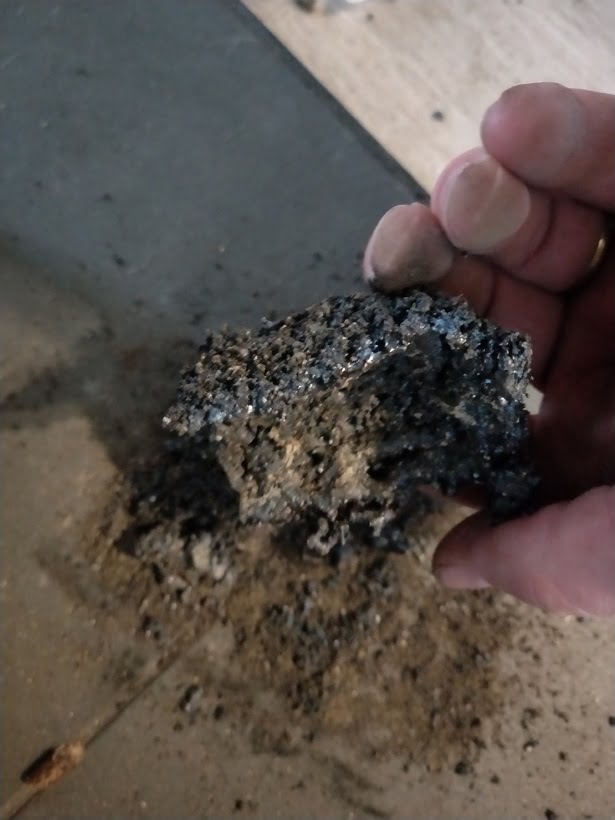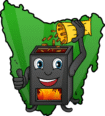Clinkers are a natural part of burning pellets in a pellet heater, but what causes clinkers and how can they be avoided? Clinkers are a hard rock like substance that form in burn pots. The type of wood being burnt, impurities in the wood and airflow in the pellet heater can all contribute to whether or not you get clinkers after each burn. Generally speaking, the higher quality the wood pellets the less chance you’ll experience clinkers. While there’s no way to stop clinkers forming once you understand what causes clinkers there are a few things you can do to help and prevent them forming.

Clinkers are caused by poor quality wood pellets, a lack of airflow in a pellet heater or a combination of the two. The primary cause of clinkers is related to airflow problems. A pellet heater that hasn’t been cleaned for a very long time will have ash built up inside the exhaust ports and exhaust fan along with the flue. This ash restricts how easily air can flow through and out of the pellet heater. With the airflow restricted the pellets don’t burn as hot and clean. This is what usually causes clinkers. The solution is simple. Clean the pellet heater properly or get it professionally service to remove the ash and improve airflow.
- Poor airflow due to ash buildup – Ash restricts airflow through the heater, resulting in an inefficient burn and more clinkers. Regular cleaning and maintenance is key.
- Impurities in wood pellets – Things like bark and other debris don’t burn well and can turn into clinkers. Higher quality pellets tend to have less impurities.
- Incorrect exhaust fan settings – If the airflow isn’t tuned properly for combustion, it can contribute to clinker formation. Make sure settings are adjusted correctly.
- Cheaper wood pellets – They may contain more impurities and debris leading to more clinkers. More expensive premium pellets tend to burn cleaner.
Check out my all about wood pellets page if you have time and want more detailed information or if you just want to know about clinkers then keep on reading below.
Clinkers in Pellet Heaters: What You Need to Know
It’s worth repeating again, clinkers are normal, and you should expect them when using a pellet heater. Wood, being a natural product, may contain impurities and other minerals. They all contribute towards the formation of clinkers. Trees grow in different areas and the ground contains different amounts of minerals. It’s these minerals and impurities that can turn into clinkers. You may find that the same brand of pellet will result in more clinkers depending on the batch or when it was purchased. It won’t matter if you burn softwood or hardwood pellets.
The second major cause of clinkers are impurities in the raw material used to create pellets. These impurities are typically things like bark or other foreign material. Pellet mills do their best to screen and filter out the raw material used to create wood pellets, but this doesn’t mean it is always 100% clean. Bark and other foreign material will not burn properly and contribute towards the formation of clinkers. A good example is a pellet mill that uses wood pallets to make pellets. As the mill would be breaking down pallets hopefully you can understand why this raw material may not be as clean as sawdust from timber milling.
Finally, the airflow settings of the exhaust fan in a pellet heater can also contribute contribute towards how big or severe clinkers are when they form in the burn pot. A pellet heater that is not tuned properly, that is doesn’t have the right amount of air for combustion, will experience a less than optimal burn. The exhaust fan speed on a pellet heater has different settings for high, medium and low heat. If these settings have been changed or are not correct, then it increases the chance you’ll get clinkers. A pellet heater that hasn’t been cleaned in ages, is full of ash and doesn’t have the correct exhaust fan settings will experience clinkers more frequently than it should.
How to Prevent Clinkers in Your Pellet Heater
So, now you know what causes clinkers, how can you stop or reduce the chance of getting them? First, keep your heater serviced and maintained. Poor airflow, as mentioned above, results in an inefficient or dirty burn which can cause clinkers. If you DIY service your heater, make sure you deep clean at least once a year, both the heater and flue, and deep clean more than once a year if you burn over 100 bags a year. If you notice clinkers or dirty black glass before this, then it may mean you need to deep clean it. Basically, deep clean when things don’t look like they are burning as expected.
Also, make sure your heater is tuned properly as incorrect airflow is also what causes clinkers. The type of wood pellet and length of flue all impact on airflow in a heater. If you purchased your heater from a retailer, they should have tuned your heater when installing it. If you installed it yourself, then make sure you adjust the exhaust fan settings to get the most efficient burn you can. A heater is tuned correctly when the fire is burning well. A lazy or too bright flame of a fire means the settings are incorrect and need to be adjusted.
Lastly, the saying “you get what you pay for” is true for wood pellets like many things. Generally speaking, cheaper pellets will burn a little dirtier and may have more clinkers than expensive brands. However, be warned that this is only a general rule of thumb and isn’t always true. Nonetheless, you will typically find that cheaper pellets come from a raw material that has more impurities in it and will result in clinkers forming more frequently than other expensive brands that come from a higher quality raw material. Some people are happy to pay top dollar for premium pellets because they burn “cleaner”.
Mega Clinkers: Causes and Solutions
While it’s normal for clinkers to form during the burning process, mega clinkers are a more severe and less frequent type of clinker that can make it nearly impossible to use your heater. These clinkers can cause burn pots to become clogged and reduce the efficiency of your heater, resulting in a decrease in heat output and other problems. If you find that you need to empty your burn pot multiple times a day to remove clinkers, it’s likely that your pellet heater needs a deep clean and service.
Mega clinkers are usually caused by a build up of ash in your pellet heater and a restriction of air flow. The only way to fix this is to deep clean your pellet heater and clean out the flue. If this is something you don’t feel comfortable doing, then please contact the retailer to book your heater in for a service. Regular maintenance and cleaning of your pellet heater can help prevent mega clinkers from forming, ensuring that you can enjoy efficient and reliable heating throughout the colder months.
The other cause of mega clinkers is poor pellet quality. This is extremely rare and if you do notice mega clinkers forming then I would definitely check and clean your pellet heater and flue first. If you are still experiencing clinkers and your heater is properly cleaned, then it could be the pellets. The best way to check here is to try and burn a different brand of pellet. If another brand still creates mega clinkers, then the problem is with your heater and it most likely hasn’t been cleaned properly or potentially has an exhaust fan issue. Contact your retailer or book it in to have it serviced.
Do Expensive Pellet Heaters Burn Cleaner?
NO! It doesn’t matter if you’ve got a Chinese pellet heater, like the ones Pellets Fire Tasmania sell in Tas or a high end luxury Piazzetta pellet heater that costs $10,000+. Pellet heaters, regardless of how much they cost or where they were made, can all potentially experience clinkers. Paying more money for a heater does not mean it will burn cleaner or better and thus not experience clinkers. All brands of pellet heaters work essentially the same way and burn the same fuel, wood pellets. How much a heater costs means nothing when it comes to what causes clinkers. You may get some more “features” but they will have no relation to clinkers.
Pellet Heater Clinker Summary
Clinkers are usually caused by poor airflow in a pellet heater. The main cause of that is ash build up. If you’ve purchased a secondhand pellet heater, give it a thorough deep clean before installing it as it will definitely has ash and other build up inside. Clinkers are unavoidable and part of owning a pellet heater. Pellet quality also plays a huge role in how often you’ll get clinkers. However, massive or mega clinkers that form after only a few hours are not normal. Deep clean your heater or book it in for a service if you are experiencing these mega clinkers. Preventing clinkers is all about good maintenance. For a complete routine, from daily checks to annual servicing, refer to my full Pellet Heater Troubleshooting & Maintenance hub.
Resources
Clinkers
